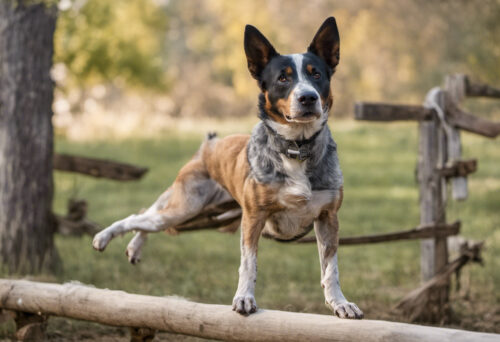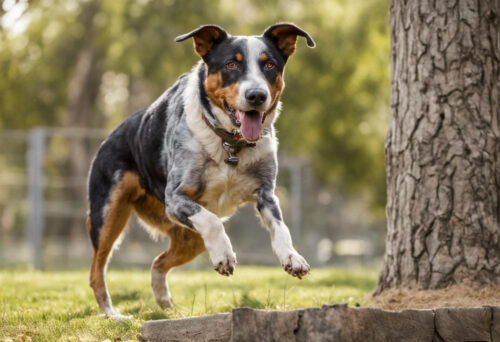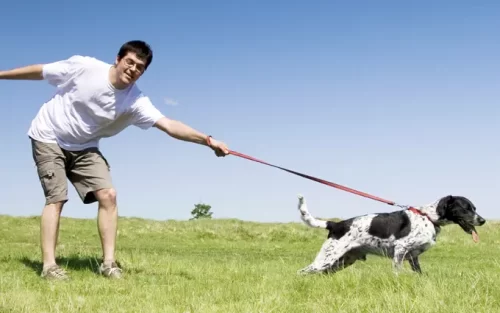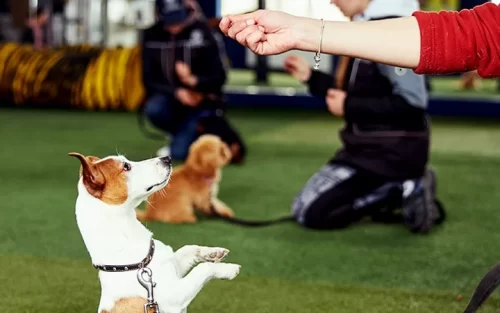If you’ve just brought a Saint Miguel Cattle Dog into your home, you’re well on your way to forging a bond with a breed that is famous for its unbridled loyalty, intelligence, and high energy. The next vital step is effective training; as with any breed, molding and shaping your Saint Miguel’s instincts and behaviors requires an understanding of the breed characteristics and a well-plowed guideline to follow. That’s where we come in: this comprehensive guide aims to arm you with all the tips and tricks of the trade to make you an ace in training your adorable, furry pal.
A Deep Dive into the Saint Miguel Cattle Dog
Before we jump into the nitty-gritty of training, a few key notes about this breed. Hailing from the island of São Miguel, one of Portugal’s Azores, the Saint Miguel Cattle Dog is a herding dog, which inherently possesses a sense of independence. They were bred to work, herd cattle, and they bear a robust, mid-sized body built for such tasks. A good understanding of their temperament, characteristics, and instinctual behaviors will empower your training regimen.
Understanding Your Dog’s Instincts
All dogs carry a set of instincts inherited from their ancestors. These instincts, while sometimes useful in a domestic setting, often need to be managed and guided so that they mesh well with the ins and outs of human life. The Saint Miguel Cattle Dog is no exception, exhibiting strong herding instincts that can morph into uncontrollable behaviors if not properly addressed. Thankfully, resources like Cesar’s Way offer great insight into how to channel these tendencies into more dog-owner friendly behaviors.
Stimulate Their Bright Minds Through Training
Given their high intelligence and eagerness to please, Saint Miguels excel when their training incorporates mental stimulation. Brain games, puzzle toys, and obedience sessions not only pass the time agreeably but also build a stronger bond between you and your new four-legged friend.
Creating a Positive Habituation Environment
Habituation refers to how your Saint Miguel responds to repeated exposure to specific stimuli. It’s a potent tool in your arsenal to guide your dog’s behavior appropriately in different environments. In general, early, consistent, and positive exposures to various environments, objects, and situations significantly assist in creating a well-adjusted, confident Saint Miguel. Renowned dog psychologists, like Dr. Jen’s Dog Blog, can provide a wealth of information on using positive habituation techniques with your dog.
Adopt the Right Training Methodology
When it comes to training Saint Miguels, or any dogs for that matter, adopting the right training methodology is key. Techniques that bolster your dog’s confidence, maintain a consistent feeding and exercise pattern, and manage distractions effectively are sure-fire mechanisms to achieve success in your training endeavor.

Establish a Routine
Building a routine for feeding, exercising, and bonding is a powerful strategy in training Saint Miguel Cattle Dogs. PetSafe depicts an informative guide on creating a beneficial routine, which is paramount in setting a sense of structure and security for your pet. As you make minor adjustments in your pet’s schedule, remember that consistency is key in reinforcing habits and easing transitions.
Regular Exercise: The Secret Ingredient
It’s no secret that this high-energy breed requires plenty of exercise. Providing your Saint Miguel with regular physical activity helps quell behavioral issues, maintain physical health, and stimulate their sharp intellect. Exercise options can be a variety of fun activities including walking, running, playing fetch, or agility training. Each one will help satisfy this working breed’s instinctual drive to be active and engaged.
Positive Reinforcement: Winning Their Hearts
Like all canines, Saint Miguels respond remarkably well to positive reinforcement during training. By rewarding their good behavior with a treat, some praise, or a pat on the head, you encourage your furry friend to repeat that action. NPR’s coverage of a recent study in canine training techniques showcases the effectiveness of this approach.
Discourage Negative Behaviors Humanely
While it’s critical to reward and encourage good behavior, it’s equally important to discourage unwanted behaviors. However, this doesn’t mean resorting to harsh methods. The Humane Society’s guide on dog training rounds up a list of ways to deter bad habits without inflicting fear or harm, allowing you to maintain a strong bond with your Cattle Dog.
Professional Help: an Ace up Your Sleeve
If training your Saint Miguel Cattle Dog seems overwhelming or progresses slower than expected, don’t hesitate to solicit professional help. Experienced dog trainers or schools, such as AKC training programs, are superb resources for difficult training scenarios, new dog owners, or those wishing to advance their dog training skills. These professionals offer personalized training plans catered to your dog’s needs and temperament.
Training your Saint Miguel Cattle Dog may appear daunting initially, but with patience, perseverance, and the help of this comprehensive guide, you are well on your way to cultivating a lifelong bond filled with love, trust, and mutual respect. Explore, learn, and implement these strategies to fully understand the art of training this intelligent, loyal, and energetic breed.

Clicker Training: The Underrated Tool
One great tool that often gets overlooked in the world of dog training, particularly with intelligent breeds like the Saint Miguel, is clicker training. Essentially, a clicker is a small device that produces a consistent sound. This sound then serves as a bridging stimulus in positive reinforcement training. With a clear, distinct signal, your pooch can learn commands faster and with more precision. For a comprehensive guide on clicker training, you might want to visit Karen Pryor Clicker Training.
Tailoring the Perfect Diet
The diet you provide for your dog will not only affect their overall physical health, but it can also provide the foundation for effective training. High-quality diet fuels your Saint Miguel’s high-energy lifestyle and bolsters their overall bodily health, ensuring they are at their best when it comes to training. You can find more information on nutrition for active dogs like the Saint Miguel from Hill’s Pet Nutrition.
Socialization: Weaving the Fabric of Good Behaviour
The process of socializing your Saint Miguel is another crucial aspect of their training; introducing them to a variety of people, dogs, sounds, smells, and experiences can help them grow into a confident and well-adjusted dog. Socializing your Saint Miguel can begin as early as their puppyhood and should be carried on into their adult life. You can check out the importance of early socialization at this link provided by the American Veterinary Medical Association.
To Crate or Not to Crate
Crate training can be a hot topic in the dog-training world. Some dog owners swear by it, while others contest against it. Though it may seem cruel or uncomfortable to some, when done correctly, crate training can provide a safe, cozy den for your dog. It can also aid in important aspects of training such as housebreaking and managing separation anxiety. The Humane Society’s educational page on crate training offers some balanced advice to consider.
The Buddy System: Learning from Other Dogs
Last but not least, it’s important to remember that dogs can learn a lot just by watching other dogs. If you have another well-behaved dog in your home, they can play a remarkably useful role in training your Saint Miguel. They can teach them appropriate behaviors and even specific commands or tricks. Check out Whole Dog Journal’s article on the concept.
In conclusion, the journey of training your Saint Miguel Cattle Dog will be challenging yet tremendously rewarding. With your dedicated effort, patience, and the insight from this all-inclusive guide, you’ll be able to foster a wonderful partnership with your four-legged friend. Remember to take it slow, keep training sessions upbeat, and above all, enjoy the journey!



